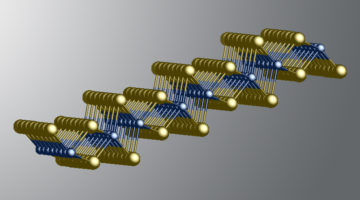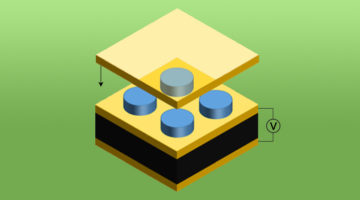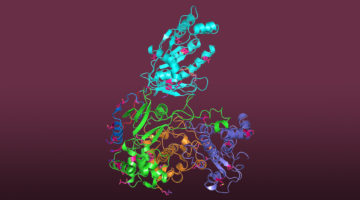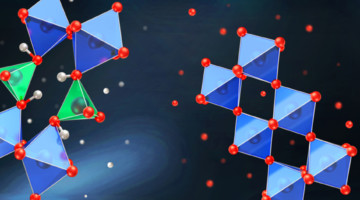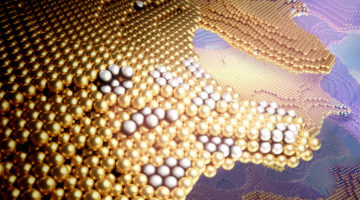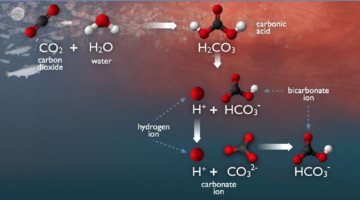Researchers have established that a particularly stable form of WTe2 is a two-dimensional topological insulator, confirming recent predictions. The findings should provide new opportunities for fundamental studies of topological phenomena and for next-generation spintronic applications. Read more »![]()
![]()
Science Highlights
Electrical Switching of Magnetic Vortex Circulation
Photoemission electron microscopy (PEEM) experiments have demonstrated that the circulation direction of a magnetic vortex can be switched by the application of an electric field, opening the door to digital devices with more streamlined system designs, improved performance, and greater energy efficiency. Read more »![]()
![]()
Subsurface Oxygen Boosts Activity of Copper Catalysts
Scientists are seeking ways to reduce levels of CO2 in the atmosphere by improving the processes that convert CO2 gas into ethanol (a liquid fuel). But copper, the best catalyst for this, is not very efficient. Now, ambient-pressure x-ray experiments have revealed how subsurface oxygen boosts copper’s catalytic activity. Read more »![]()
![]()
A Bacterial Jigsaw Puzzle Is Solved
Bacterial microcompartments (BMCs) are hollow protein shells that encapsulate enzymes involved in bacterial metabolism. Crystallography studies have provided atomic-resolution views of a fully assembled BMC, revealing basic principles of shell construction for fighting pathogens or bioengineering applications. Read more »![]()
![]()
Structure of a Key Protein from the Zika Virus
The Zika virus (ZIKV) is a mosquito-borne pathogen recently linked to birth defects in infants. At the ALS, researchers have resolved the structure of a key ZIKV protein to 3.0 Å, an important step toward the rational design of drugs capable of disrupting viral functions and halting the spread of the disease. Read more »![]()
![]()
A Multifunctional Material with Electric-Field Control
Three distinct crystalline phases with different electronic, magnetic, and optical properties were reversibly induced in a material through the insertion and extraction of ions by an electric field at room temperature. Such multifunctional materials are desirable for many applications, from smart windows to spintronics. Read more »![]()
![]()
A Closer Look at Dynamic Restructuring in Catalysts
Researchers have structurally and chemically “visualized” the surface of a silver–gold alloy as it reorganizes itself during catalytic activation. The insights gained from this methodology can lead to improved catalysts for energy-intensive industrial applications, thereby increasing efficiency and reducing waste. Read more »![]()
![]()
New Evidence for a Water-Rich History on Mars
Mars may have been a wetter place than previously thought, according to experiments on lab-synthesized mineral samples serving as proxies for Martian meteorites. Shock experiments followed by x-ray diffraction studies showed how changes in the minerals could indicate a more water-rich history for the Red Planet. Read more »![]()
![]()
APXPS Finds Carbonate Reversal at Liquid Interfaces
Aqueous carbonate systems are central to many processes essential to life, from the blood buffer system to the global carbon cycle. Using APXPS, researchers probed the concentration of carbonates near an interface, finding a surprising reversal in the expected abundances as a function of depth. Read more »![]()
![]()
Strain Turns Tin into a 3D Topological Dirac Semimetal
A small amount of compressive strain turns a nonmetallic form of tin into a 3D topological Dirac semimetal—a kind of “supermetal” with very high electron mobility. With its rich topological phase diagram, the material shows promise for both novel physics and eventual device applications. Read more »![]()
![]()
- « Previous Page
- 1
- …
- 16
- 17
- 18
- 19
- 20
- …
- 27
- Next Page »
